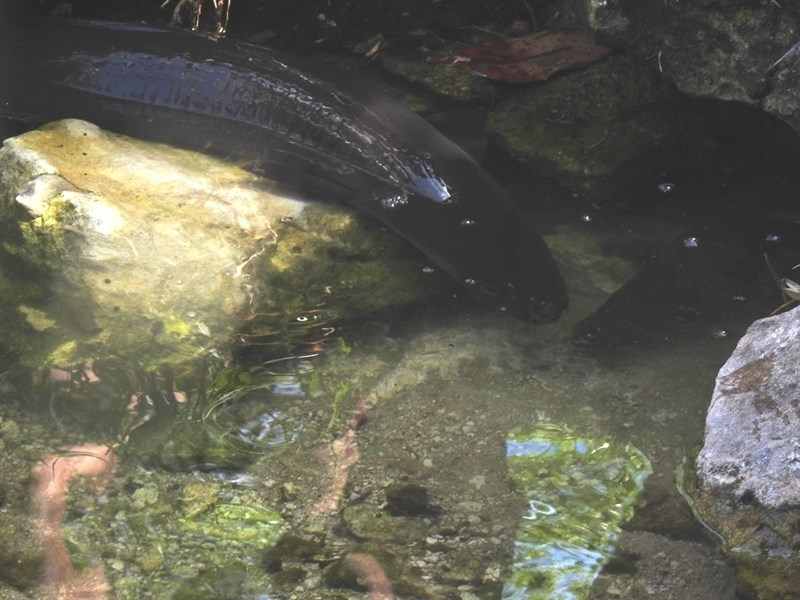Anguilla mossambica, commonly known as the “Anguilla mossambica,” is a species of eel found in various marine environments. These eels are distinguished by their elongated bodies, which are well-suited for navigating the complex underwater ecosystems they inhabit.
Description & Characteristics
The Anguilla mossambica can grow up to an impressive 150.0 cm in length, showcasing their adaptability to a variety of habitats. These eels possess a serpentine body form with smooth, scaleless skin that allows for effortless movement through water. Their dorsal, anal, and caudal fins are connected to form a continuous fin that extends along their bodies, providing excellent stability and maneuverability.
Habitat and Occurrence
Anguilla mossambica is a common sight in marine ecosystems, particularly in coastal areas and estuaries. Their adaptability allows them to thrive in a range of salinity levels, making them a prevalent presence in both freshwater and saltwater environments. They are often found in marine zones, demonstrating their tolerance for a variety of conditions. These eels play a crucial role in maintaining the balance of these aquatic ecosystems.
Taxonomy
Anguilla mossambica belongs to the Class: Teleostei, Order: Anguilliformes, and Family: Anguillidae. The classification of this species within the Teleostei class highlights their bony skeletons and advanced features. The Order: Anguilliformes reflects their distinct eel-like body structure. Their membership in the Family: Anguillidae emphasizes their shared characteristics with other eel species.
Feeding
Anguilla mossambica are carnivorous and opportunistic feeders, consuming a wide variety of prey. Their diet includes invertebrates, fish, and even smaller eels. These eels use their sharp teeth and powerful jaws to subdue their prey. Their hunting methods involve ambush tactics, waiting for unsuspecting prey to come within range before striking with lightning speed.

Image References